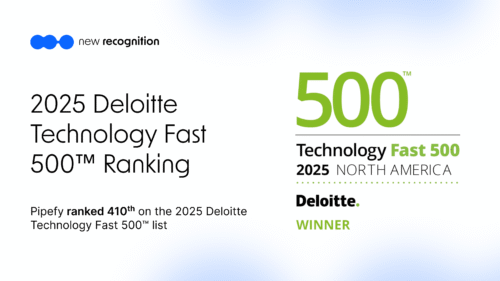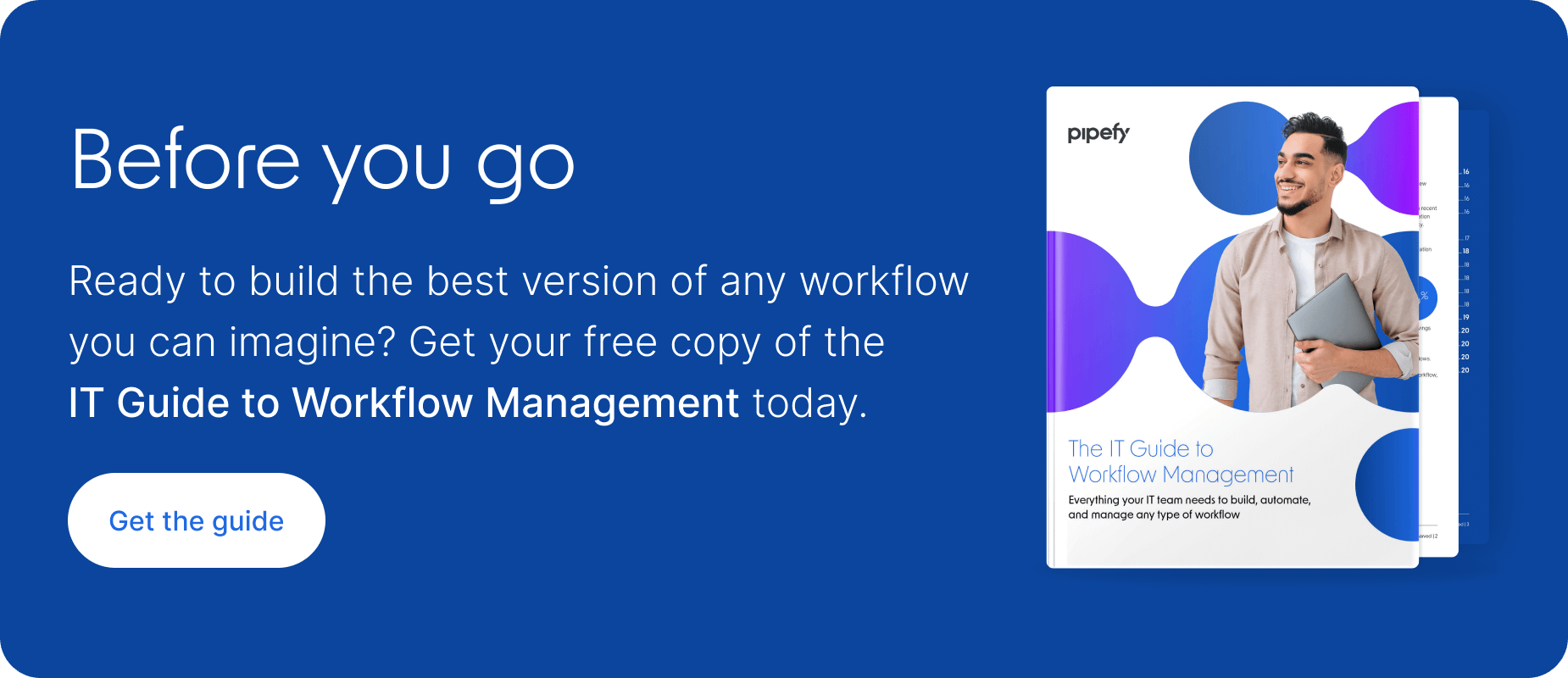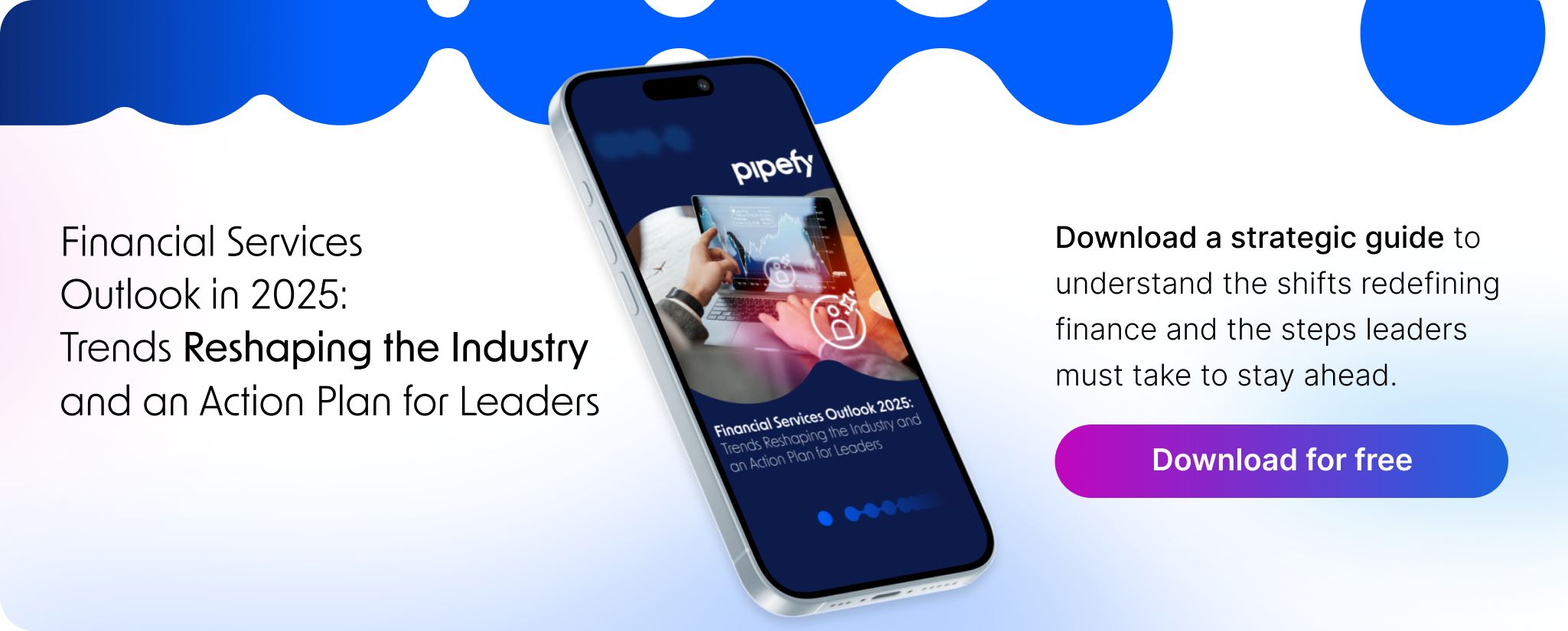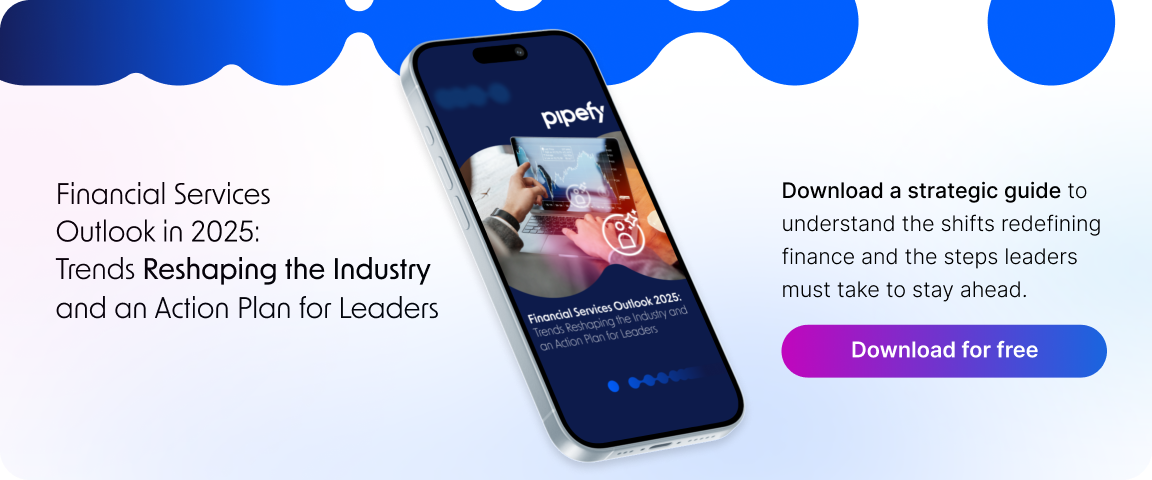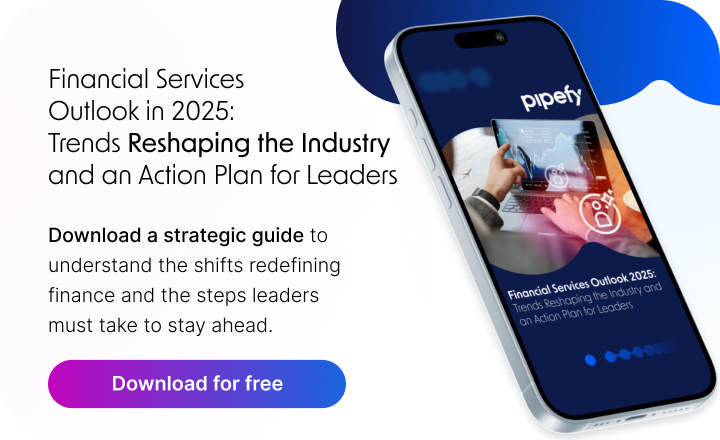
As Artificial Intelligence (AI) takes on a more strategic role across industries, companies are looking for ways to put it into practice without increasing their dependency on technical teams. No-code agent development is opening this path by providing visual, intuitive platforms that allow professionals in operations, finance, and compliance to design, manage, and scale AI agents with full autonomy.
Increasingly, this evolution goes beyond standalone no-code tools. Business orchestration and automation platforms, like Pipefy, allow companies to build no-code AI Agents that operate inside fully orchestrated, end-to-end workflows, connecting people, systems, and decisions in a governed execution layer and helping organizations move from isolated AI experimentation to governed, end-to-end execution.
In this article, we break down how no-code AI agents development works, where the technology is headed, and how it can make a real difference for businesses in sectors like financial services, insurance, and consumer goods.
What Is No-code Agent Development?
No-code agent development refers to the creation of AI-powered agents using drag-and-drop interfaces, visual workflows, and form-based configurations instead of traditional code. Platforms like Pipefy, for example, enable users to design, train, and deploy AI agents without having to write a single line of code.
In orchestration-driven platforms, like Pipefy, these agents don’t operate in isolation. They are embedded into workflows that define rules, approvals, integrations, and human handoffs, ensuring AI actions are contextual, auditable, and aligned with business policies.
These agents can perform a lot of different tasks, such as:
- Responding to emails automatically
- Routing service requests to the appropriate teams
- Looking up and validating data
- Triggering workflows based on user actions
What makes this approach so powerful is its accessibility. By removing the need for traditional coding, no-code tools give teams outside the IT department, such as operations or customer service, the autonomy to build and iterate on AI solutions that directly support their daily work.
How Do No-code AI Agents Work?
In enterprise environments, no-code AI Agents increasingly run within orchestration layers that provide governance by design. This means policies, permissions, audit trails, and human-in-the-loop controls are defined directly in the workflow, not added later as an afterthought.
To understand how these agents operate, it helps to look at the main elements that make up their development. These foundational components work together to make building and managing AI agents both intuitive and scalable:
Visual Logic Builders
Instead of just mapping conversational logic, orchestration-based builders allow teams to design full execution flows — from data intake and validation to approvals, system updates, and exception handling — all in one visual environment.
- If X is said, respond with Y
- If certain data is missing, ask for Z
This kind of visual logic reduces complexity and makes it easier to test and refine processes as they evolve.
Behavior Configuration
Each agent can be tailored with a specific purpose, communication style, and set of rules. For example:
- “Answer HR policy questions using this knowledge base”
- “Flag and escalate any request that is lacking information”
Data Integration
Modern no-code tools are designed to connect effortlessly with CRMs, ERPs, databases, APIs, and third-party platforms. This allows agents to:
- Access relevant customer records
- Check or validate transactions
- Log activities directly in internal systems
Deployment & Monitoring
Once everything is in place, agents can be launched across different channels, such as Slack, email, or service portals. From there, users can track how the agent performs, make adjustments as needed, and do all this without writing any code.

Why It Matters for Business Leaders
One of the most strategic advantages of adopting no-code agent development is the ability to scale automation without scaling technical debt. As businesses grow, so do their operational demands.
Relying only on IT teams to build and manage AI features can create gaps, especially when quick adjustments or updates are needed. In this context, no-code tools can change that dynamic, putting more control in the hands of business units. This not only speeds up the operations, but also fosters a culture of experimentation and continuous improvement.
Teams can start small by experimenting with automations tailored to real operational needs, testing, adjusting, and expanding without having to depend on limited development resources.
For example, in industries like insurance and finance, where regulations shift often, this kind of flexibility is essential. With no-code platforms, teams can update AI agents quickly to reflect policy changes, keeping operations aligned with governance while moving at the pace the business demands.
In sectors where efficiency has a direct impact on costs and customer experience, this kind of control is key to staying competitive.
No wonder that, according to a 2023 report by McKinsey, 60% of business executives believe that democratizing AI development through no-code tools will be key to their digital strategy over the next three years.
When no-code AI Agents are connected to orchestrated workflows, companies don’t have to wait months to see value. Many organizations begin measuring operational and financial impact in days, including cycle-time reduction, cost avoidance, and faster execution of critical business decisions across processes.
Read more: Find out how to choose the right AI Agent for your business operations

Key Features of No-code Agent Development Platforms
When evaluating no-code platforms, it’s useful to look at the common features found in the most reliable, enterprise-oriented solutions. While each platform has its own approach, many of them share tools that offer accessibility, security, and operational efficiency, even for non-technical teams.
Here’s a snapshot of what these platforms typically offer:
| Feature | How It Works |
| Visual flow builder | Create and organize agent logic through intuitive drag-and-drop or guided form-based flows |
| Integration connectors | Quickly connect with systems, like Salesforce and SAP, using ready-made integrations |
| AI prompt configuration | Easily define how the AI should behave by setting its tone, instructions, and context in natural language |
| Multi-channel deployment | Make agents available across channels like Slack, Microsoft Teams, web portals, and email |
| Performance dashboards | Track how agents are performing with real-time insights into activity, usage, and impact |
| Access control & governance | Assign roles, manage permissions, and keep detailed records to maintain security and oversight |
In this space, Pipefy stands out as a business orchestration and automation platform that brings together workflows, AI Agents, and integrations in a single, no-code environment. Instead of isolated automations, teams orchestrate how work flows across systems, people, and AI, with enterprise-grade governance built in.
Pipefy also allows teams to deploy AI Agents that take actions based on triggers, classifying, routing, and executing tasks autonomously, while maintaining full visibility and control.
Read more: Check out the ultimate guide to transforming your processes with AI Agent Automation
Practical Example: Claims Review in the Insurance Sector
Imagine an insurance company handling hundreds of claim review requests per week. Normally, a customer service team triages each case manually. With no-code agent development, a business analyst can configure an AI agent to:
- Receive intake form data
- Check policy status in the CRM
- Classify urgency based on incident type
- Escalate medical claims above $10,000 to a human reviewer
This could be done without writing code. The agent could integrate via API with policy and claims systems and flags discrepancies automatically, and the result would be a faster triage, fewer manual steps, and consistent rule enforcement, all configured by the operations team.
Challenges in No-code Agent Development
Despite the benefits, companies should be aware of potential challenges when building a No-code AI Agent, for example:
1. Over-reliance on Templates
Templates can accelerate development but may create blind spots. Teams should validate flows in detail before deploying them to critical workflows.
2. Data Access Limitations
No-code tools may have restrictions in connecting with legacy systems or custom applications, so the IT support team might still be needed for some integrations.
3. Misalignment with Governance
Without proper oversight, agents may expose the company to compliance or security issues. Role-based permissions and approval flows can help ensure responsible use.
Trends: What’s Ahead for No-code Agent Development?
The landscape for no-code AI agents is changing quickly, and with it, the opportunities for businesses to automate more intelligently and at scale.
As platforms mature, they’re not just adding features: they’re redefining how work gets done across entire operations. Here are some of the most important trends shaping the future of no-code agent development:
AI + RPA Convergence
We can expect to see a tighter integration between no-code AI agents and robotic process automation (RPA) tools. While AI agents handle dynamic, language-driven tasks, RPA takes care of structured, repetitive processes. Together, they enable effortless automation from front-office interactions to back-office workflows.
In orchestration platforms, this convergence is governed centrally, ensuring RPA actions and AI decisions follow the same policies, audit rules, and exception management models.
Industry-specific Agents
Technology providers are now introducing pre-configured agents designed specifically for some industries, such as health, financial services, insurance, and consumer goods. These agents bring built-in understanding of sector regulations, common processes, and terminology, helping teams get started faster and with more confidence in the results.
Natural Language Configuration
No-code is becoming even more intuitive. Instead of configuring logic through visual builders alone, users will soon be able to set up workflows using plain language instructions. For example, “if the customer selects X, send email Y and assign to team Z.” This lowers barriers further and makes building automations feel more like conversation than construction.
Autonomous Agents
The next evolution is already underway: agents that don’t just wait for instructions but act proactively. Platforms like Pipefy are enabling AI Agents to monitor conditions, trigger actions, escalate exceptions, and keep stakeholders informed, supporting continuous execution and decision-making and pushing automation into an even more strategic territory.
In practice, autonomy is being balanced with control. The most effective platforms enable agents to act independently within defined guardrails, combining proactive execution with human oversight, approval checkpoints, and full traceability.
Read more: Understand how Pipefy connects no-code AI agents and workflows to help teams automate smarter
FAQ
What is a no-code AI agent?
It’s a software agent built without coding, using visual tools to define logic and behavior for automation or AI-driven tasks.
Can non-technical teams create these agents?
Yes. Teams in finance, HR, and operations can configure agents using drag-and-drop interfaces.
Are no-code agents secure?
Well-known platforms, such as Pipefy, include audit logs, access control, and encryption to ensure data security.
Can they connect with my current systems?
Yes, through APIs and prebuilt connectors with CRMs, ERPs, and ticketing systems.
Do I still need IT for setup?
In some complex scenarios, yes. But for many use cases, business teams can work independently.
How Pipefy Can Help You Start No-code Agent Development In Practice
Pipefy is a business orchestration and automation platform designed to help operations and service teams orchestrate workflows, AI Agents, and systems in a single execution layer, without heavy dependency on developers.
With Pipefy, you can:
- Use visual workflows to define process rules
- Deploy AI Agents that classify, execute, and escalate tasks
- Integrate effortlessly with internal databases and CRMs
- Monitor agent actions in real time
- Control access and track activities with enterprise-grade security
These features are already helping teams in the insurance, financial services, and consumer goods industries to automate decisions, ensure compliance, and free up resources for higher-value activities.
More than a no-code tool, Pipefy operates as a business orchestration and automation platform, connecting AI Agents, workflows, and critical systems into a single execution layer. This approach helps organizations move from experimentation to real, governed AI outcomes, delivering measurable results in days, not months.
Click the button below to book a free demonstration and try the platform in your company today:

